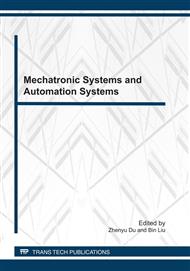p.509
p.514
p.518
p.524
p.530
p.536
p.542
p.551
p.557
The Research on Pan-Genes of an Object Boundary
Abstract:
The aim of this paper is to give some researches and instructions of relations between the special shapes of an object boundary and their 8-adjacency chain code strings, characteristics of these chain code strings, internal relations among these chain code strings. These characteristics can be used to identify the region of an object boundary, when necessary, to generate this regional boundary. But this is irrelevant to various operations on image. This function of a chain code string is similar to the roles of genes in biology, is called pan-genes. An object boundary on binary image is considered by many tiny line segments connected with each other. The research on characteristics of chain code strings of line segments is an important segment of recognition and generation of an object boundary. This paper gives characteristics of chain code strings of pan-genes corresponding line segments, relations among these chain code strings, chain code string organization forms of chain code string units of line segments (these units are abbreviated with UL), the effective ways and methods on recognition and generation of line segments. Thus, this paper studies the chain code features of corners and circles. This paper gives a variety forms and features of ULs, shows the effects and methods on recognition and generation of an object boundary, gets basic properties of chain code strings about corners and circles.
Info:
Periodical:
Pages:
530-535
Citation:
Online since:
June 2011
Authors:
Keywords:
Price:
Сopyright:
© 2011 Trans Tech Publications Ltd. All Rights Reserved
Share:
Citation:


